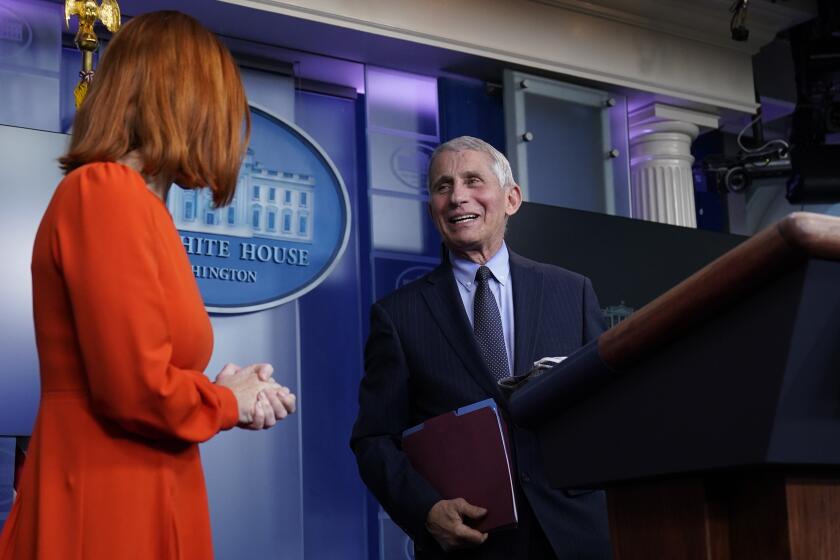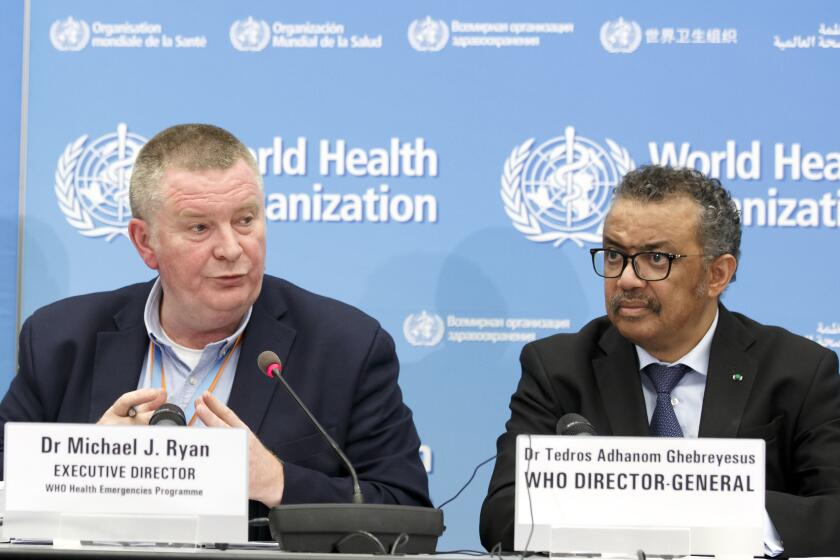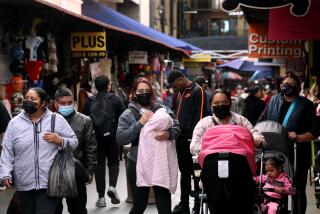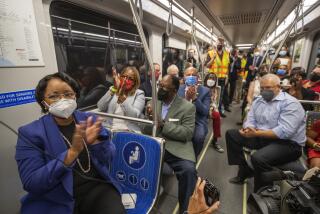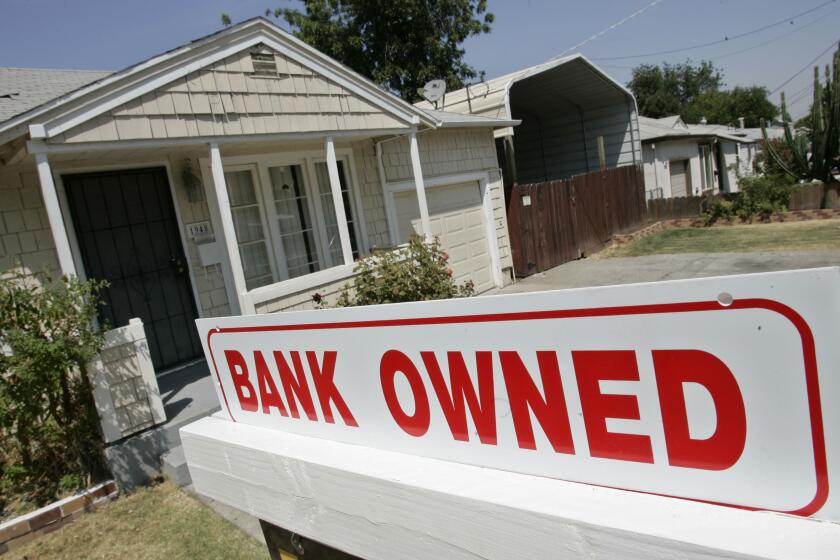With reopenings in gear, Newsom warns virus cases could shift from drop-off to ‘plateau’

The darkest days of California’s winter coronavirus surge are shrinking in the rearview mirror, prompting new optimism — as well as continued pleas for vigilance — as the state moves forward with a wider reopening of businesses, as well as schools for in-person learning.
Although the state’s coronavirus numbers have plummeted to levels not seen in months, Gov. Gavin Newsom acknowledged on Monday that “we are seeing a little bit of a plateau, and one needs to be mindful of that.”
His remarks echo sentiments recently shared by federal health officials, who warn that, despite the recent progress, it would be premature to declare victory over the pandemic.
Dr. Rochelle Walensky, director of the U.S. Centers for Disease Control and Prevention, said Monday that she remained “deeply concerned about a potential shift in the trajectory of the pandemic” as the latest data suggested that declines in cases were stalling nationwide.
“I am really worried about reports that more states are rolling back the exact public health measures we have recommended to protect people from COVID-19,” she said during a briefing.
Teachers and workers in child care, emergency services and food and agriculture will be eligible to get COVID-19 vaccinations in L.A. County starting Monday.
The rate of decline may have slowed, but recent weeks have put California — and the nation as a whole — on a more positive trajectory.
Over the last week, California has reported an average of 5,300 new coronavirus cases per day, down almost 46% from two weeks ago.
However, the rate of drop has slowed. California’s tally of average daily coronavirus cases fell 20% from last week, a softer decline than in the previous week, when there was a 32% week-over-week decline.
As of Sunday, 4,912 coronavirus-positive patients were hospitalized statewide, the lowest figure since Nov. 19. The number of Californians battling COVID-19 in intensive care units — 1,439 — has also fallen to pre-Thanksgiving levels.
The number of daily coronavirus cases also continues to drop in hard-hit Los Angeles County.
Over about the past week, the nation’s most populous county averaged about 1,600 reported cases a day — the lowest level since early November and an 89% drop from the 15,000-plus infections that were being disclosed daily in early January.
“These declines are real, and we’re grateful for the choices made and the work done by everyone,” county Public Health Director Barbara Ferrer said during a briefing Monday.
Countywide COVID-19 hospitalizations fell to 1,502 on Sunday, the lowest such number since mid-November. The number of people with COVID-19 in L.A. County’s ICUs that day was 475, the smallest number since Thanksgiving.
However, even amid the significant and sustained decreases in newly confirmed infections and hospitalizations, officials are continuing to preach patience and persistence.
“We all know that this is very positive news,” said Dr. Christina Ghaly, the county’s director of health services. But, she added, it also needs to be taken “with a dose of caution.”
There’s also no avoiding the harsh reality that many Californians are still paying the pandemic’s ultimate price, as daily death tolls remain in the hundreds. More than 52,000 residents have died from COVID-19 statewide, including over 21,000 in L.A. County alone.
“The reality is that COVID-19 is still taking our loved ones, and it’s still destroying many of our precious families,” said county Supervisor Hilda Solis.
In a grim acknowledgment of the continued toll, Solis pointed out Monday that the county is “still suspending the environmental rules limiting the number of cremations that can be performed each month to deal with the unprecedented influx of bodies.”
Officials and experts alike say California’s turnaround was fueled prominently by the collective actions of residents and businesses to tamp down transmission of the coronavirus. But conditions could once again begin to deteriorate if too many people let their guard down.
“Any behavior that serves to increase the amount of transmission within the community could very easily lead to another uptick in the number of infections that we experience across the county. And it will take two to three weeks or so before we will see that impact within the hospitalization numbers,” Ghaly said during Monday’s briefing.
She urged residents, even those who have been vaccinated against COVID-19, to continue taking precautions to stymie the spread — “keep wearing your mask, washing your hands, keeping your distance as much as possible and avoiding interactions with those outside of your household to the greatest extent feasible.”
California and N.Y. mutant coronavirus variants are ‘worrisome’
Still, given the current metrics, Newsom said some areas of the state are positioned to move forward.
The governor said state officials would likely announce Tuesday that seven counties would move from the purple tier — the strictest of the state’s four-category reopening roadmap — into the more permissive red tier. The counties slated to advance are Santa Clara, San Francisco, San Luis Obispo, El Dorado, Napa, Lassen and Modoc.
If those seven join the red tier later this week, that would raise the number of Californians who live in counties that are outside the most restrictive tier from about 1.6 million to 5 million, representing about 13% of the state’s population.
Newsom said more counties were expected to enter the red tier next week.
“I’m very encouraged by the stabilization — the case rates, the positivity rate,” he said. “We do anticipate a majority of Californians in the next few weeks to be residing in counties that have moved out of the most restrictive purple tier.”
The plan offers incentives to districts that offer in-person instruction in counties with fewer than 25 new daily coronavirus cases per 100,000 residents.
That optimism is also reflected in an agreement Newsom and Democratic legislative leaders announced Monday to give school districts $2 billion to open, by April 1, campuses serving students in transitional kindergarten through second grade.
“We’re not waiting to get out of this purple tier in order to get our kids safely back into in-person instruction,” Newsom said during a news conference. “And that’s what’s so meaningful to me — that we’re not slowing down; we’re now accelerating the pace of reopening.”
Perhaps the rosiest development of all is that the number of people vaccinated against COVID-19 continues to grow. As of Monday, almost 9.1 million vaccine doses had been administered statewide, according to the California Department of Public Health.
This week, the vaccine eligibility pool in L.A. County expanded to include those working in food and agriculture, child care and education, law enforcement and emergency services.
Solis said the county plans to set aside 30% of its vaccines for educators.
“This is a critical step in giving our educators, students and their families the peace of mind that they and their loved ones will be protected in the classroom,” she said.
But the county, like the rest of the state and nation, continues to be constrained by a shortage of available doses. L.A. County, for instance, has the capability to provide 500,000 shots this week, but only enough doses on hand to accommodate 270,000 appointments, according to Ferrer.
There is growing optimism that the stream of inoculants will soon swell — given expected increases in shipments of the currently available Pfizer-BioNTech and Moderna vaccines, as well as the U.S. Food and Drug Administration’s recent authorization of the one-shot vaccination manufactured by Johnson & Johnson, the first shipments of which are expected to arrive this week.
Ferrer said that all three vaccines “are extraordinarily powerful” and that residents should feel comfortable taking whichever one is available.
“Please know when you come to a site, it will be very important to just accept the vaccine that’s being provided, as all of the vaccines that we have and that we’re able to offer have protected people from serious illness that requires hospitalization, and from death,” she said.
The World Health Organization’s emergencies chief says it’s ‘premature’ and ‘unrealistic’ to think that the pandemic might be over by year’s end.
More vaccines can’t come soon enough. Echoing Walensky’s concerns, Dr. Anthony Fauci, the nation’s leading expert on infectious diseases, said Sunday that recent national data suggested the drop in new daily coronavirus cases had stalled, and cases were starting to increase slightly, hovering around 70,000 a day.
Both he and Walensky warned against states moving too aggressively to loosen coronavirus restrictions and reopen their economies.
That’s especially true, Walensky said, given the continued proliferation of more-infectious coronavirus variants.
“At this level of cases, with variants spreading, we stand to completely lose the hard-earned ground we have gained,” Walensky said. “These variants are a very real threat to our people and our progress. Now is not the time to relax the critical safeguards that we know can stop the spread of COVID-19 in our communities, not when we are so close.”
More to Read
Start your day right
Sign up for Essential California for news, features and recommendations from the L.A. Times and beyond in your inbox six days a week.
You may occasionally receive promotional content from the Los Angeles Times.

